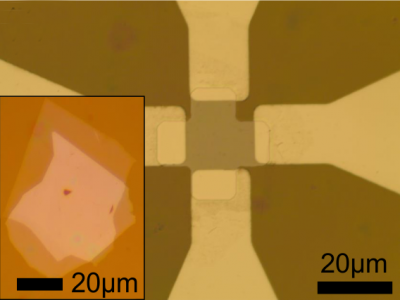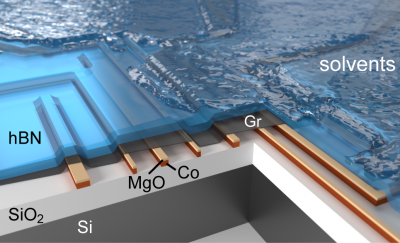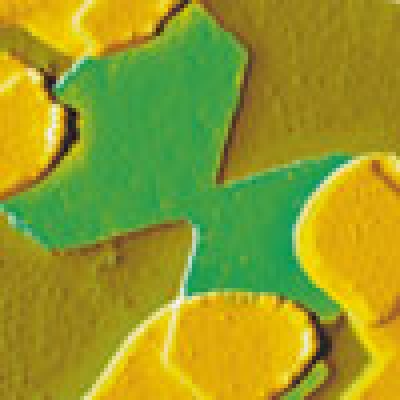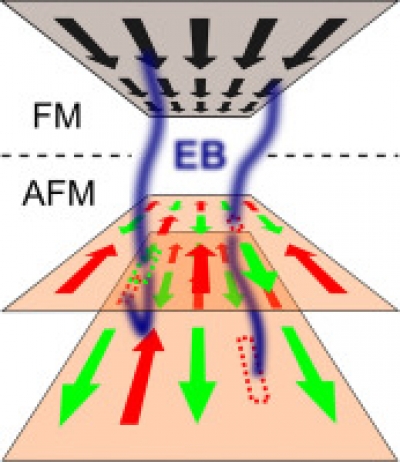Current events
Next talk tomorrow at 11:30 by Katrin Hecker!
News 06.06.2025
New publication:Anisotropic supercurrent suppression and revivals in a graphene-based Josephson junction under in-plane magnetic fields
Site Content:
24.06.2016
New publication: Modeling charge relaxation in graphene quantum dots induced by electron-phonon interaction

Phys. Rev. B 93, 245423 (2016) We study and compare two analytic models of graphene quantum dots for calculating charge relaxation times due to electron-phonon interaction. Recently, charge relaxation processes in graphene quantum dots have been probed experimentally and here we provide a theoretical estimate of relaxation times. By comparing a model with pure edge confinement to a model with electrostatic confinement, we find that the latter features much larger relaxation times. Interestingly, relaxation times in electrostatically defined quantum dots are predicted to exceed the experimentally observed lower bound of ∼100 ns.

09.06.2016
Group Excursion - "Kletterwald"
Thanks to Luca, Michael and Stephan we had a fantastic afternoon high up in the trees...


07.06.2016
New publication: Encapsulated graphene-based Hall sensors on foil with increased sensitivity

Physica Status Solidi B (online) The encapsulation of graphene-based Hall sensors on foil is shown to be an effective method for improving the performance in terms of higher sensitivity for magnetic field detection. Two types of encapsulation were investigated: a simple encapsulation of graphene with polymethyl methacrylate (PMMA) as a proof of concept and an encapsulation with mechanically exfoliated hexagonal boron nitride (hBN). The Hall sensor with PMMA encapsulation already shows higher sensitivity compared to the one without encapsulation. However, the Hall sensor with graphene encapsulated between two stacks of hBN shows a current and a voltage normalized sensitivity of up to 2270 V/AT and 0.68 V/VT, respectively, which are the highest reported sensitivity values for Hall sensors on foil so far.

26.05.2016
New publication: Spin Lifetimes Exceeding 12 ns in Graphene Nonlocal Spin Valve Devices

Nano Lett. 16, 3533 (2016) We show spin lifetimes of 12.6 ns and spin diffusion lengths as long as 30.5 μm in single layer graphene nonlocal spin transport devices at room temperature. This is accomplished by the fabrication of Co/MgO-electrodes on a Si/SiO2 substrate and the subsequent dry transfer of a graphene-hBN-stack on top of this electrode structure where a large hBN flake is needed in order to diminish the ingress of solvents along the hBN-to-substrate interface. Interestingly, long spin lifetimes are observed despite the fact that both conductive scanning force microscopy and contact resistance measurements reveal the existence of conducting pinholes throughout the MgO spin injection/detection barriers. Compared to previous devices, we observe an enhancement of the spin lifetime in single layer graphene by a factor of 6. We demonstrate that the spin lifetime does not depend on the contact resistance area products when comparing all bottom-up devices indicating that spin absorption at the contacts is not the predominant source for spin dephasing.

20.05.2016
New publication: Size quantization of Dirac fermions in graphene constrictions

Nature Communications 7, 11570(2016) Quantum point contacts are cornerstones of mesoscopic physics and central building blocks for quantum electronics. Although the Fermi wavelength in high-quality bulk graphene can be tuned up to hundreds of nanometres, the observation of quantum confinement of Dirac electrons in nanostructured graphene has proven surprisingly challenging. Here we show ballistic transport and quantized conductance of size-confined Dirac fermions in lithographically defined graphene constrictions. At high carrier densities, the observed conductance agrees excellently with the Landauer theory of ballistic transport without any adjustable parameter. Experimental data and simulations for the evolution of the conductance with magnetic field unambiguously confirm the identification of size quantization in the constriction. Close to the charge neutrality point, bias voltage spectroscopy reveals a renormalized Fermi velocity of ~1.5 × 106 ms −1 in our constrictions. Moreover, at low carrier density transport measurements allow probing the density of localized states at edges, thus offering a unique handle on edge physics in graphene devices.

19.05.2016
New publication: Role of the antiferromagnetic bulk spins in exchange bias

Journal of Magnetism and Magnetic Materials 416,2 (2016)
This “Critical Focused Issue” presents a brief review of experiments and models which describe the origin
of exchange bias in epitaxial or textured ferromagnetic/antiferromagnetic bilayers. Evidence is presented
which clearly indicates that inner, uncompensated, pinned moments in the bulk of the antiferromagnet
(AFM) play a very important role in setting the magnitude of the exchange bias. A critical evaluation of
the extensive literature in the field indicates that it is useful to think of this bulk, pinned uncompensated
moments as a new type of a ferromagnet which has a low total moment, an ordering temperature given
by the AFM Néel temperature, with parallel aligned moments randomly distributed on the regular AFM
lattice.

18.05.2016
New publication
Correspondence: On the nature of strong piezoelectricity in graphene on SiO2
Nature Communications 7, 11570(2016)

15.04.2016
New publication: Book chapter in Carbon Nanomaterials Sourcebook: Graphene, Fullerenes, Nanotubes, and Nanodiamonds

We contributed a book chapter on "Graphene Quantum dots" in "Carbon Nanomaterials Sourcebook: Graphene, Fullerenes, Nanotubes, and Nanodiamonds [Volume I, Klaus D. Sattler(ed.)] by CRC Press ISBN: 9781482252682, April(2016). For more information please see https://www.crcpress.com/Carbon-Nanomaterials-Sourcebook-Graphene-Fullerenes-Nanotubes-and-Nanodiamonds/Sattler/9781482252682.

